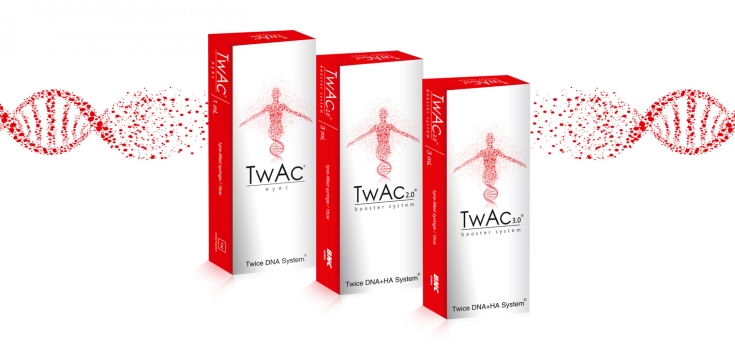Aesthetic medicine is actively developing, and it is becoming increasingly clear that the emphasis should be placed not only on the treatment and elimination of certain changes, but also on the prevention of their occurrence. In order to restore elasticity to aging skin, make it fresh and moisturized, you need to make a lot of efforts. Modern research shows that the combination of polynucleotides (PDRN) and hyaluronic acid is the best choice for the prevention and correction of age-related skin changes. Read on estet-portal.com how these substances resist aging, and why their combination is the most effective for its prevention.
The use of polynucleotides to restore fading facial skin
Products containing polynucleotides not only act as fillers but also improve tissue regeneration. Recently, research on the role of PDRN in skin rejuvenation has provided the basis for the evidence-based use of polynucleotides in restorative dermatology.
It was proven back in 1999 that PDRN and adenosine can stimulate the growth rate of human skin fibroblasts.
TwAc® preparations, presented by Medhome Trading House, have a stimulating effect on local immunity and proliferative processes. The polynucleotides act as a prodrug, providing cells with an effective amount of deoxyribonucleotides.
Restoring aging skin:
• mechanisms of the effect of polynucleotides on aging facial skin;
• the role of hyaluronic acid in restoring fading facial skin;
• preparations for the effective restoration of fading facial skin.
Mechanisms of the effect of polynucleotides on fading facial skin
According to the current theory of aging, skin aging occurs due to slower regeneration processes, as well as due to exposure to damaging agents such as free radicals. The advantage of using polynucleotides is that they affect the processes that provoke skin aging, namely:
• PDRN have a pronounced antioxidant activity;
• polynucleotides regulate the expression of ferritin, thereby protecting cells from the toxic effects of iron;
• polynucleotides reduce the expression of inflammatory cytokines;
• PDRNs modulate the expression of several genes, including genes affecting the state of the water balance;
• polynucleotides have a photoprotective effect, preventing damage to the skin by ultraviolet rays.
Thus, the use of polynucleotides makes it possible to activate the reserve capabilities of aging skin, as well as protect it from adverse factors.

The role of hyaluronic acid in the restoration of fading facial skin
Products based on hyaluronic acid are highly tolerant and practically do not cause complications. However, the half-life of hyaluronic acid is quite short. In this connection, with the intradermal injection of fillers based on it, the effect lasts from 6 to 18 months. The mechanism of action of hyaluronic acid is mainly associated with its high hydrophilicity. By attracting water, hyaluronic acid ensures the creation of the necessary volume. The combination of polynucleotides and hyaluronic acid is considered the most optimal for restoring aging skin, since polynucleotides stimulate regeneration processes and activate fibroblasts, and hyaluronic acid creates all the necessary conditions for this.
Preparations for the effective restoration of fading facial skin
Polynucleotide gels are injected using fine needles and specific treatments are optimized to get the best result in every part of the face. For younger patients, prophylactic treatment is recommended, for older patients, a longer recovery course is preferable.
The best clinical results with polynucleotides are seen about a month after the treatment, while the effect of the use of hyaluronic acid is seen immediately after the procedure.
Polynucleotides TwAc®, presented by Medhome Trading House, are optimally suited for the correction of aging skin. After applying these preparations, superficial fine wrinkles are reduced, and the skin of the face and neck becomes more elastic.







Add a comment